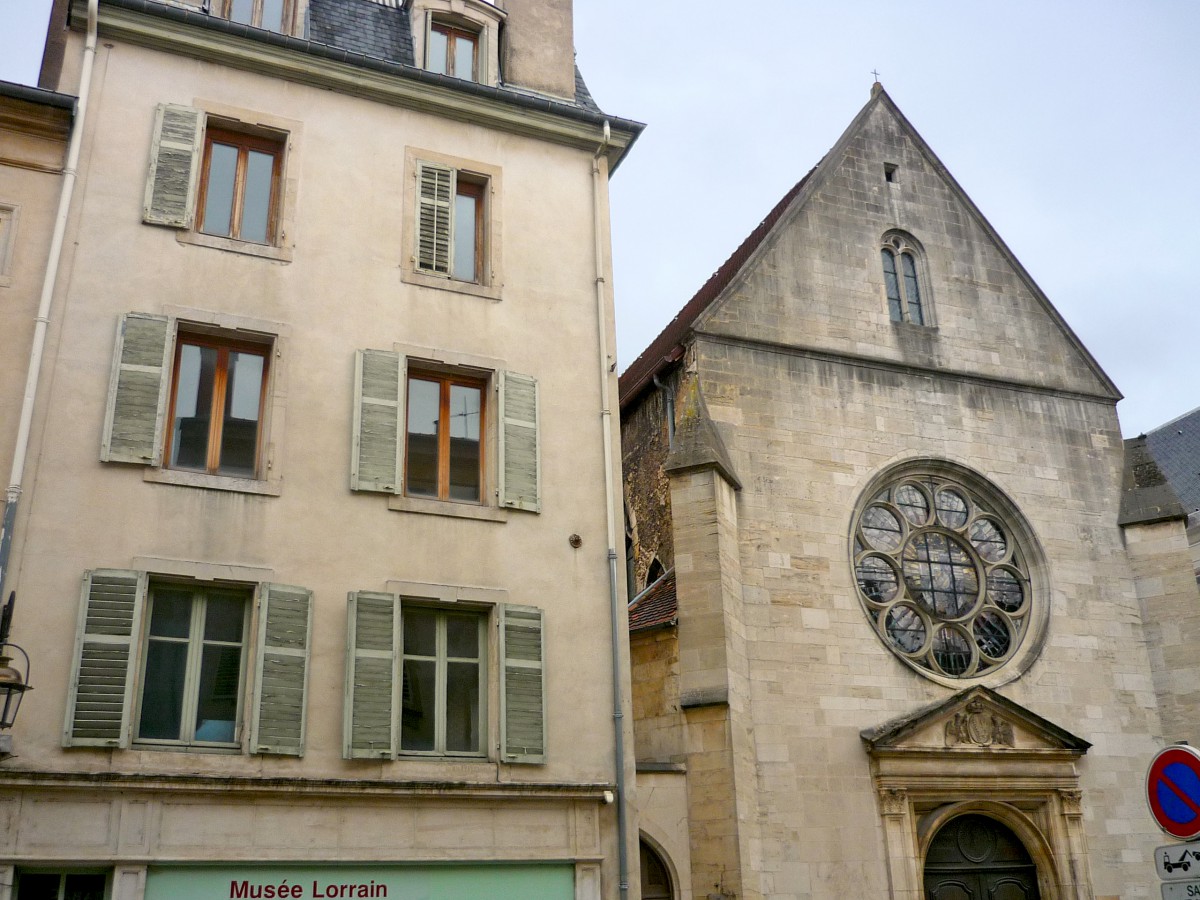Next to the Nancy’s Ducal Palace stands the Church of the Cordeliers (Église des Cordeliers), which takes its name from the Franciscan Order whose members wore a cord around their waist. If the building does not look too grandiose, it nevertheless holds a long and rich history that still continues today with the descendant of the Habsburg dynasty. Duke René II commissioned the building of the Church in the 15th century as a dedication for his victory over Charles the Bold at the battle of Nancy in 1477.
Visit of the Church

The building does not hold regular services today and you may find that it is something between a church and a museum, as it serves as a necropolis for the Dukes of Lorraine.
When the church was consecrated in 1487, it was linked to the Ducal Palace by a covered hallway, which has now disappeared. Once inside, the visitor is impressed by the length of the nave (73 metres-long) and by the church’s vault, decorated with frescos of rich colours.

Along the nave are some interesting Renaissance polychrome tombs. In the southern wall is Duke René II’s tomb, which was unfortunately partially destroyed during the Revolution. But it is the tomb of René II’s wife, Philippe de Gueldre, which is the most moving. The remarkable recumbent figure of the Duchess is a stained limestone work from Ligier Richier, which miraculously escaped from the destruction of the Révolutionnaires.
Reach the choir stalls of the church and take the time to admire the stalls from 1691 with their putti playing music. They originally came from the Abbey of Salival (dismantled at the Revolution) and were put back together in the church in 1818 in an attempt to remove all traces of the damage caused during the Revolution.
The polychrome altarpiece, which decorates the altar stone dates from 1522 and depicts the Holy Trinity. Its shell-niches contain representations of evangelists and saints, as well as the Annunciation.
From there, you can admire the classical-style rose window above the portal, filled with modern stained glass featuring the coat of arms of the House of Lorraine.
To the left of the altar is a small hallway leading to another outstanding circular-shaped space of the Church: the Chapel, inspired by that of the Medicis in Florence.

The hallway used to house an uncommon Romanesque sculpted group depicting a crusader with wife in an embrace.
The chapel was built between 1609 and 1612 and its superb octagon dome was decorated with small lanterns in 1632. Despite what the visitor can see and admire, the sanctuary never reached the initial expectations of the Dukes.
Adjoining the church, the Monastery of the Cordeliers was built, which now hosts the Museum of Popular Arts and Tradition, part of the Lorraine Historic Museum. Former rural life in Lorraine is displayed through housing, furniture, tools and craftworks, as well as reconstructions of Lorraine house interiors.
The Cordeliers Church and the Habsburgs

The Cordeliers Church has always been dear to the Habsburg-Lorraine dynasty, for many of their ancestors are buried here. This is where Marie-Antoinette stopped on her way to meet her future husband Louis XVI in 1770 to pay respect at the graves of her ancestors in the circular-shaped Chapel.
On the 10th May 1951, Archduke Otto von Habsburg married Princess Regina of Saxe-Meiningen in Nancy and the ceremony was held in the church. In 2001, the couple and their family met in the church to celebrate their golden wedding anniversary. One of the Lorraine Museum staff told us that Otto and his family regularly come to Nancy to pay their respects to their ancestors.

For more information




